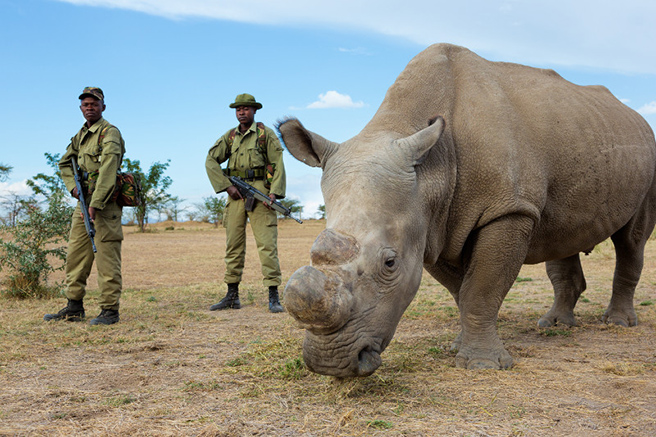Kazungula Magnified

Besides Lupani Primary School and Machenje Fishing Lodge, a number of other key AWF projects—in this area that includes Botswana, Namibia, Zambia, and Zimbabwe—are bringing benefits to wildlife and people in the Kazungula landscape.
Rhino recovery
In 2010, only one white rhino—a bull named Fwanya, or “rascal”—remained in all of Zambia. That same year, AWF partnered with the Zambia Wildlife Authority (ZAWA) to translocate four white rhinos from South Africa to Zambia’s Mosi-oa-Tunya National Park. Today, nine rhinos now inhabit the park, including Emmanuel, a male calf born on December 25. A contingent of scouts guard the rhinos 24 hours a day to protect them from poachers, and AWF continues its support of the park.
Fisheries management
Communities that live alongside the Zambezi River depend on it for their livelihoods; however, they also run the risk of endangering that livelihood through overfishing. Along a 150-km section of the river, AWF is working with local villages in Zambia to develop a management plan that will allow communities to co-manage and co-police the river’s fisheries resources, for example by establishing breeding zones as non-fishing areas. In addition, fingerlings raised by the Mawndi Fish Farm, built by AWF and the Inyambo community, are used to restock the river and sold at markets to raise revenue for the community.
Ngoma Safari Lodge
Northern Botswana’s Chobe National Park is home to a large concentration of wildlife, but it is too small to support its animals residents. This gives elephants, buffalo, and other wildlife no other option but to spill over into community areas. AWF brokered a partnership between a private safari operator and the community to build Ngoma Safari Lodge, a high-end lodge that offers local residents employment and revenue in return for setting aside a portion of their land for conservation.